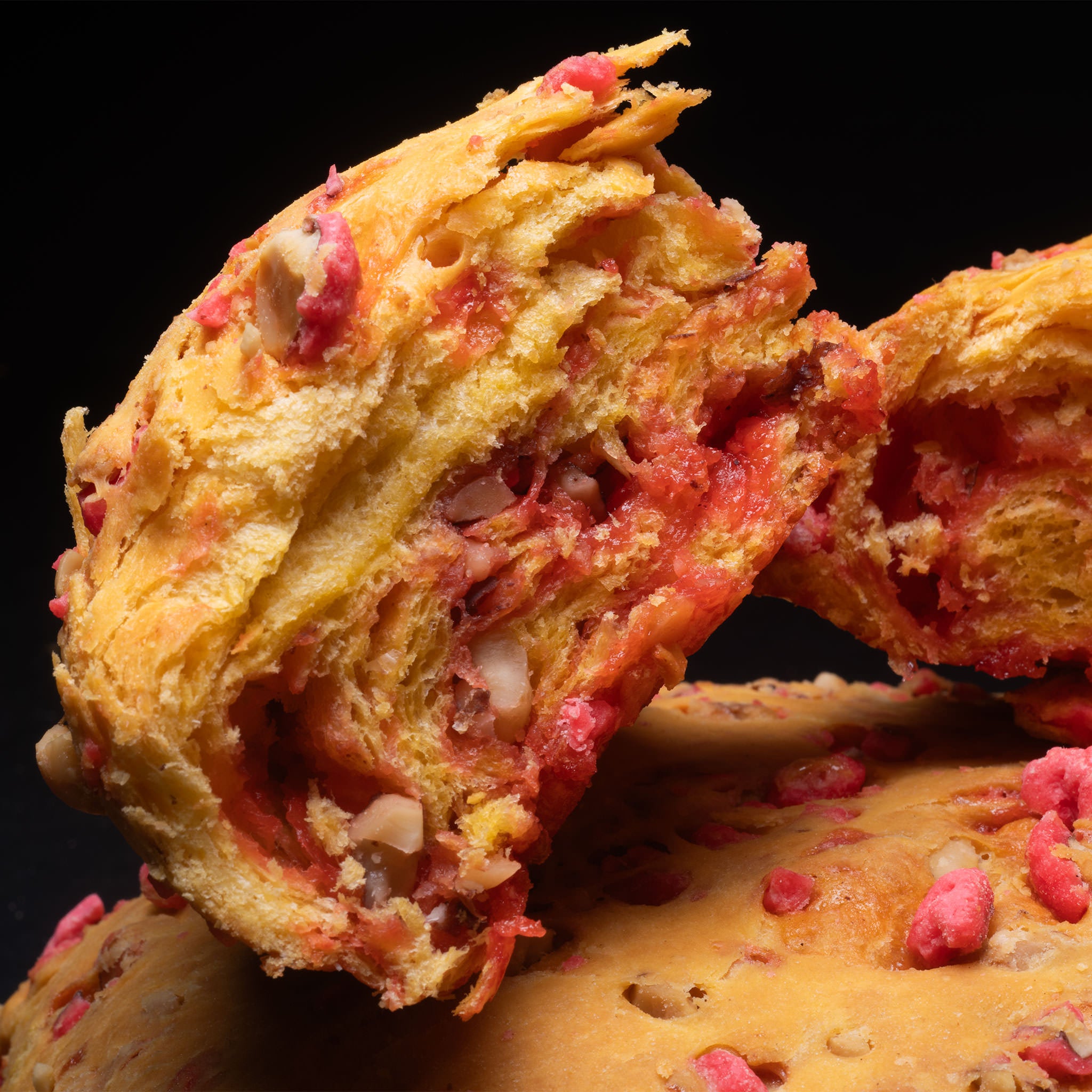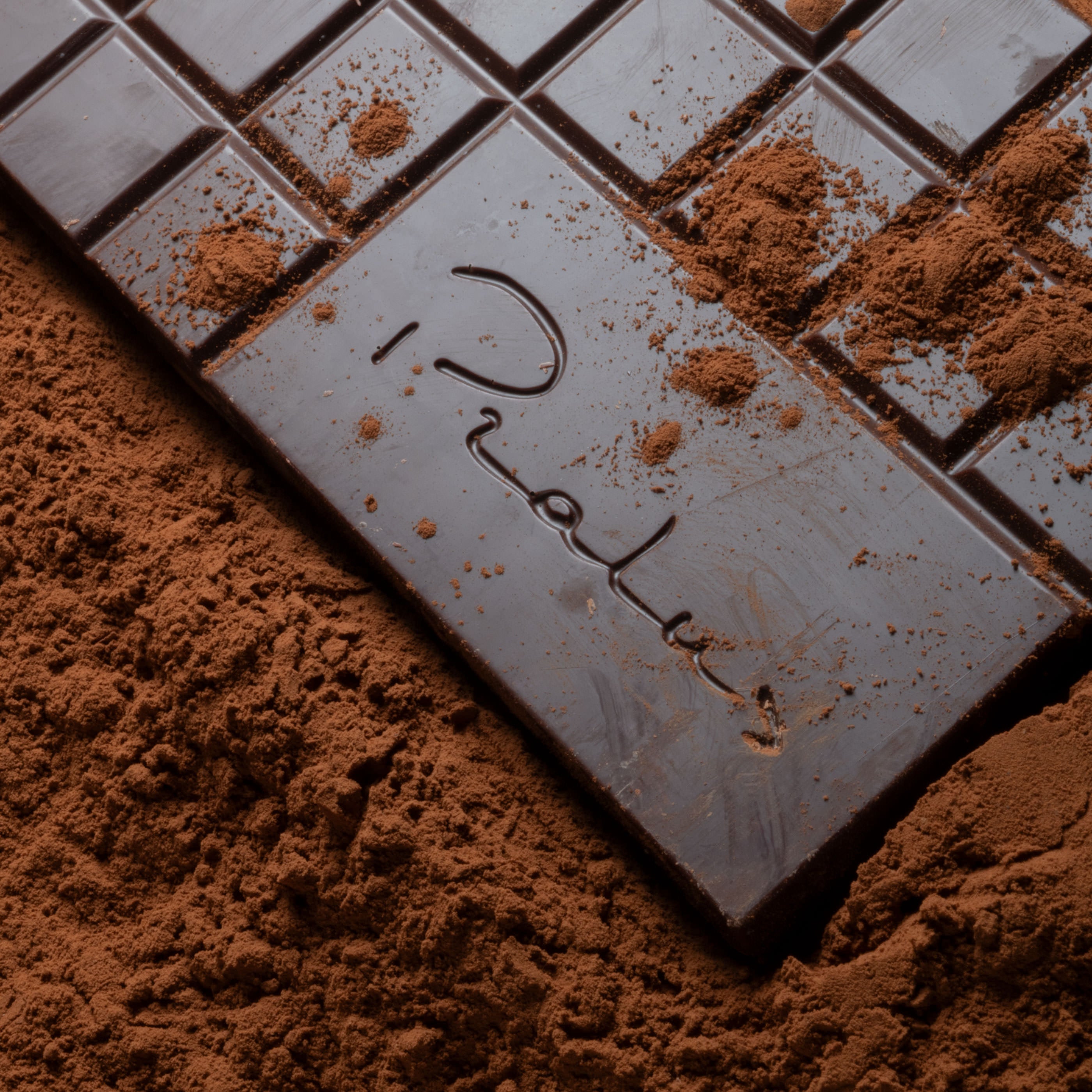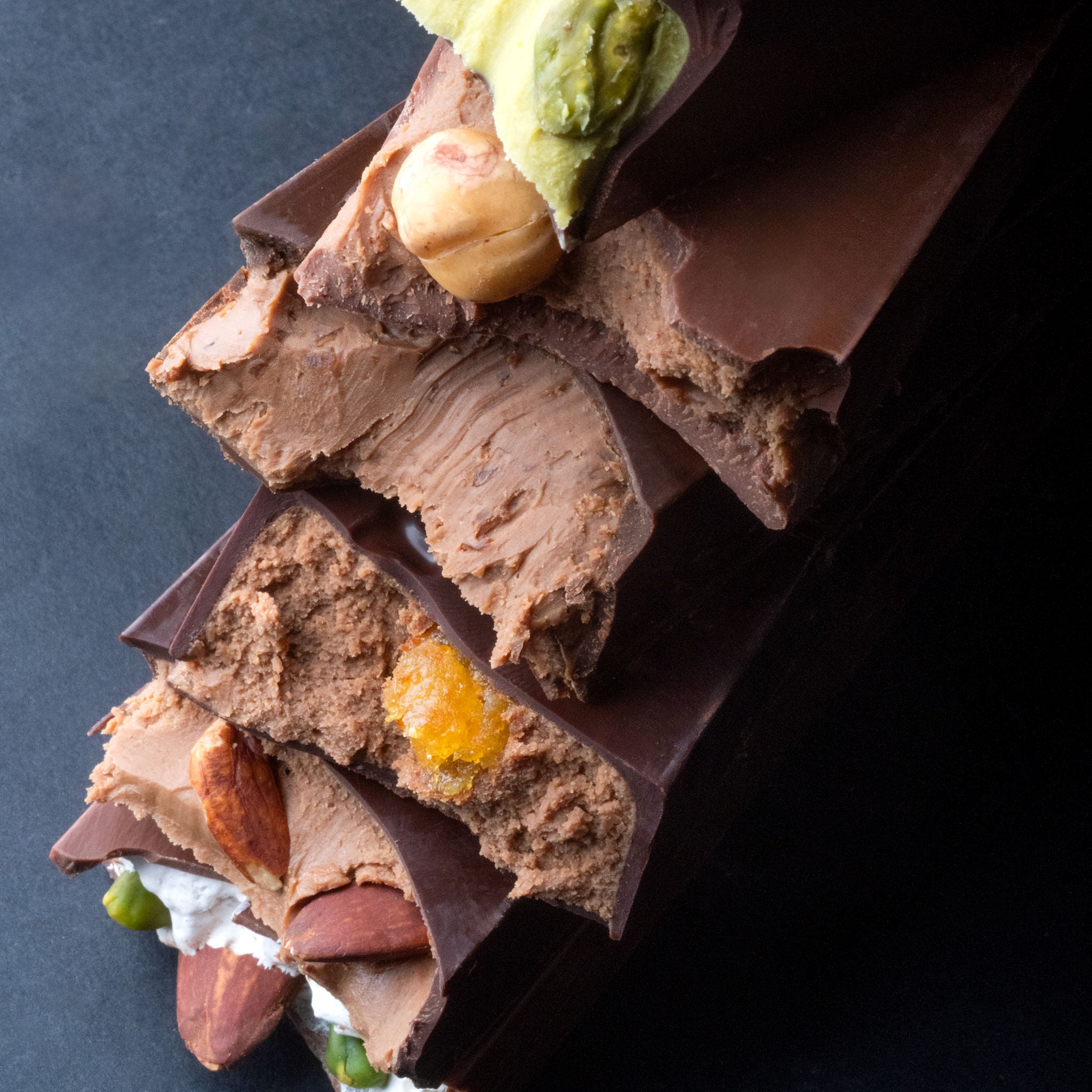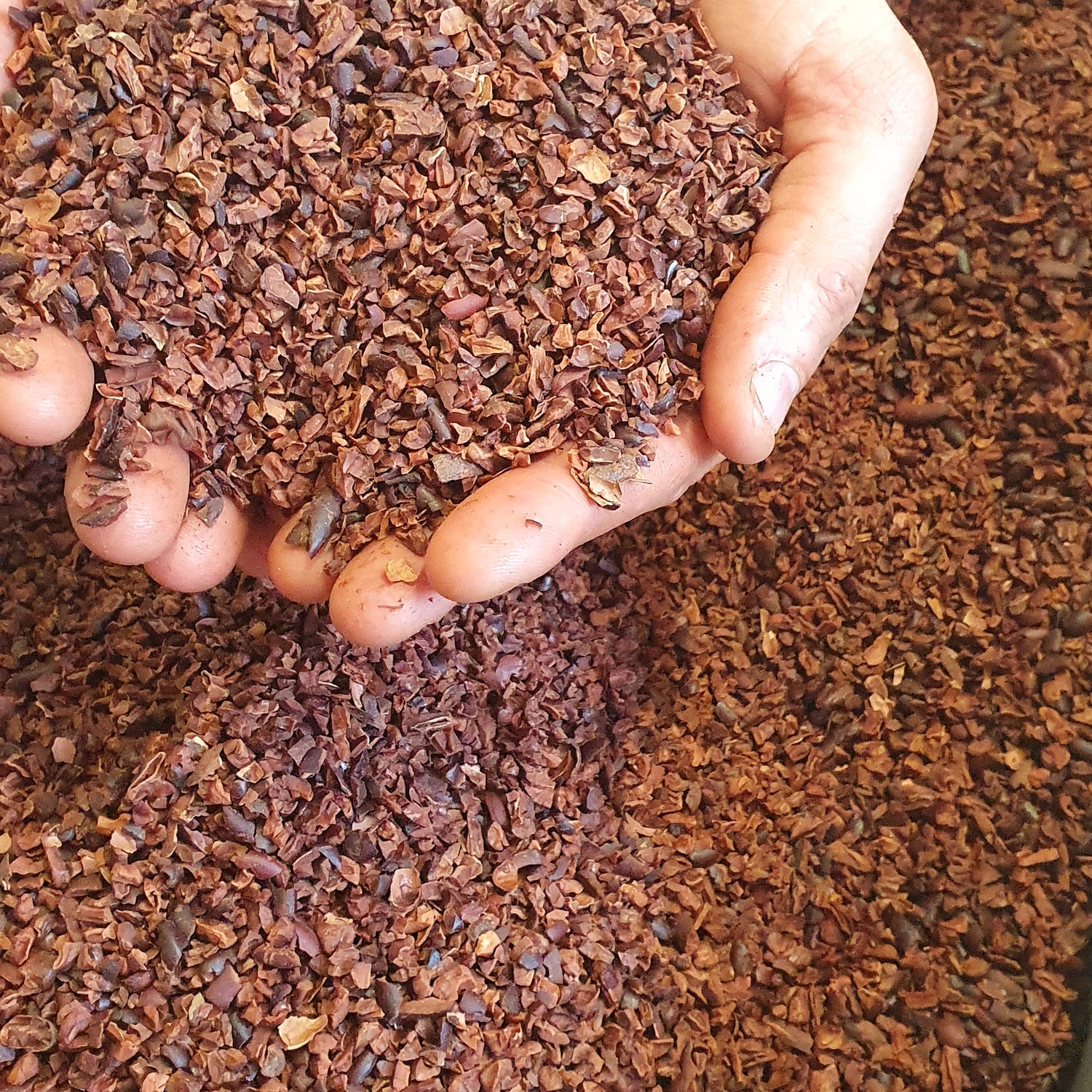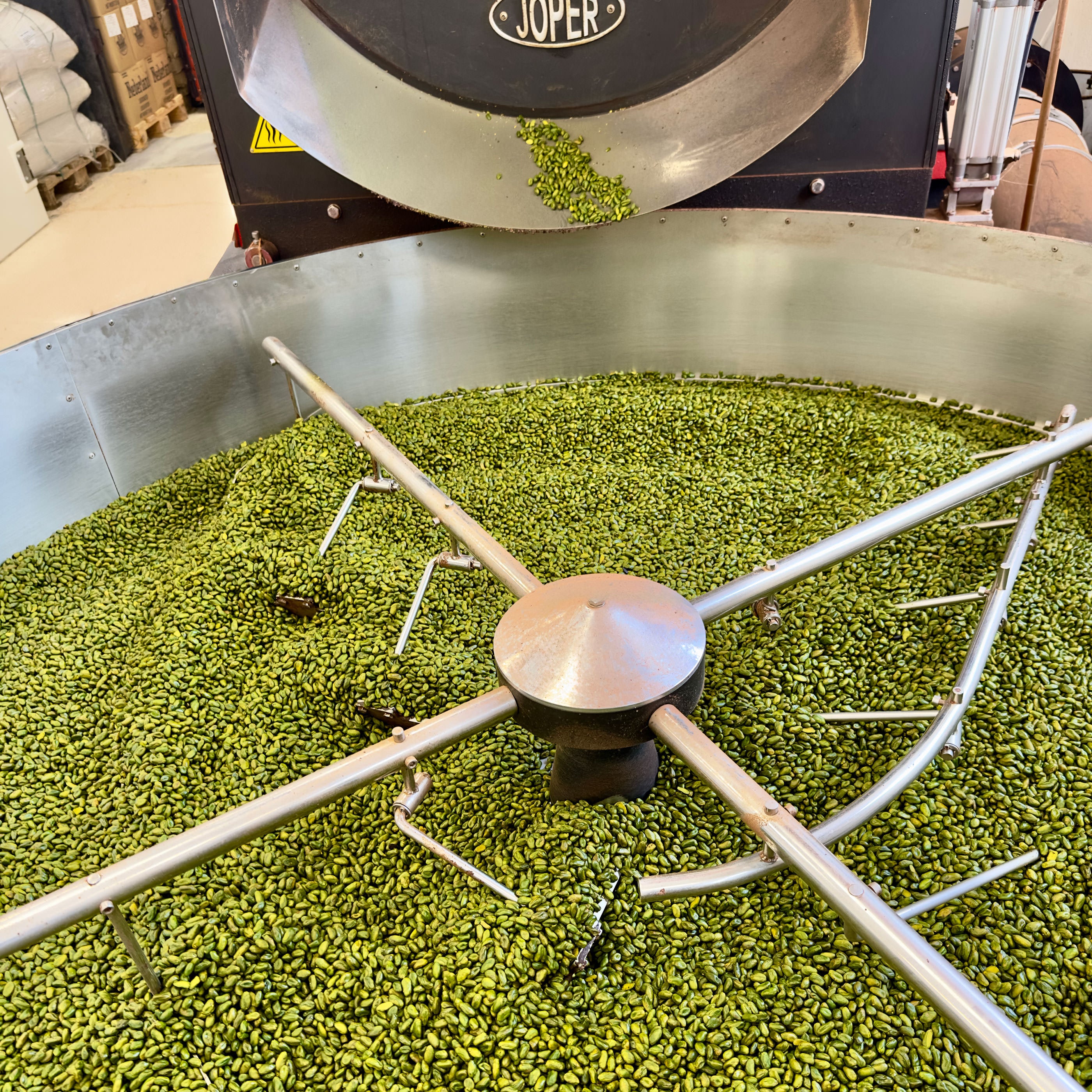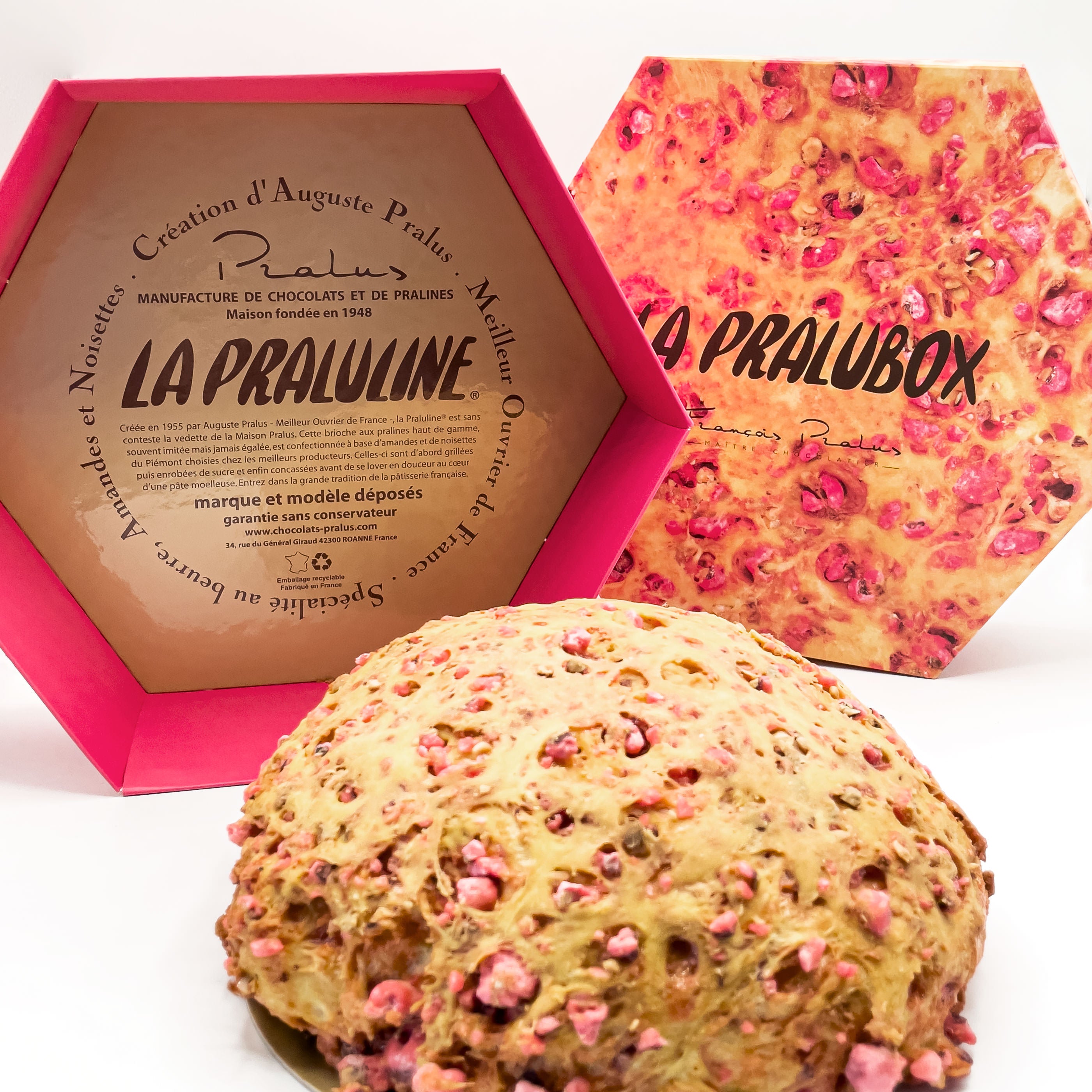If the name Pralus is inseparable from Praluline, chocolate has propelled its reputation beyond the town of Roanne where it is made, from the bean to the bar.
By taking over the family business, François Pralus developed the production of chocolate from cocoa beans in 1990. An adventure that began in a cellar redeveloped to install the first small machines, under the store in downtown Roanne. In 1992, he launched the tablets which he then called “purs crus”, that is to say without mixing beans. A term which refers to great wines, which François Pralus cannot imagine mixing. He is the first chocolatier to produce chocolate without mixing the origins of the beans as was done then and as he had learned.
Bean to bar and homemade
François Pralus travels the world to choose dried beans from the best cocoa origins: in Central America, South America, Indonesia... A raw material with which he creates chocolate in Roanne for his bars, chocolate candies, confectionery and for baking. From Fortissima its first recipe (80% cocoa from Ghana, Java and Ecuador) to La Javanaise (75% cocoa from Ghana and Indonesia), supplemented by around fifteen origins offered in bars. Today we are talking about bean-to-bar, that is to say the production of chocolate from cocoa beans . “I do everything myself, from choosing the beans to conching ,” explains the master chocolatier, “ rather than sourcing from specialized suppliers.” The making of chocolate candies, ganaches and pralines is of course part of the homemade tradition anchored in the DNA of the Pralus house.
Recognized know-how and references
Quickly recognized by his peers and the prestigious chefs (cooks, pastry chefs and chocolatiers) who work with his chocolate, François Pralus garners awards: Academy Chocolate Awards, ranking of the Best Chocolatiers of Paris by Gault-Millau, 3* Guild of Fine food, A must-have on the Croqueurs de chocolat bar, n°1 in the ranking of chocolatiers in Capital’s ranking of food champions…
Pralus pastry and chocolate
At Pralus, the chocolate produced at the factory is used in the composition of confectionery and of course signature pastries, such as the Paris-Dakar. This dessert created for a reception at the Senegalese embassy combines the crunchiness of a chocolate puff pastry and the creaminess of a light Chuao ganache. A nod to the Tropézienne, the chocolate Pralusienne consists of a chocolate chip brioche topped with a chocolate mousseline cream. Very chocolate too, the classic Marquise au chocolat, its chocolate sponge cake and its light chocolate cream made with Fortissima (80%. Recently Hugo and his team of pastry chefs added a Saint-Honoré chocolate to the menu: on a dough caramelized chocolate puff pastry, a light chocolate pastry cream, chocolate choux, a chocolate cream, a brownie and a chocolate whipped cream Embarking on the lands of the Pralus plantation, the Madagascar tart combines the flavors of chocolate, vanilla and pepper. Madagascar.
Hazelnut and chocolate go well together and the Piedmontese pays homage to them: hazelnut biscuit, praline buttercream and dark chocolate ganache in gourmet tarts! Just like the traditional Succès which hides under its 75% dark chocolate coating a hazelnut biscuit and a 55% dark chocolate ganache.
Chocolate words
Tree : the cocoa tree is a long-leaved tree that grows to around 5 meters. It grows in the shelter of tall trees and bears pods and flowers all year round. A tree can have 5000 flowers on its trunk and branches.
Nip beans : the cocoa bean is contained in the pod, which contains around fifty of them gathered in a sort of cluster. The beans are covered in mucilage, a thick white membrane similar to lychee flesh.
Origins: the country, the climate, the land and the know-how of the planters influence the quality of the beans and the flavors they will develop. The origin of the beans from which the chocolate is made therefore has a crucial importance on the flavors highlighted by the master chocolatier. In fact, the terroir and the type of beans determine the flavor of the chocolate.
Fermentation: the beans are fermented on the plantation once shelled. The mucilage ferments for 6 days, this fermentation is alcoholic. This step is important to reveal the taste of the cocoa.
Drying: once fermentation is complete, the beans are dried in the sun, and in some countries in the heat of wood fires.
Masses: cocoa can be imported in masses, i.e. cocoa paste. The masses take up much less space than beans in transport and those who use them do not need to go through roasting or conching. This is not the case at Pralus which works directly with the bean.
Roasting is a crucial step. The degree and time of roasting vary depending on the origin of the beans, the type of cocoa and the know-how of the master chocolatier. Roasting causes the acids to evaporate and develops the aromas. The beans are then cooled slowly before being crushed in the Tarare cocoa cracker. We obtain the cocoa nibs.
Conche: conches are machines used to refine cocoa to obtain chocolate. The nibs added with sugar and cocoa butter turn for 3 days in this large vat to obtain a cocoa fineness of around 20 to 30 microns.
Tabulation: this term brings together the stages of tempering the cocoa to mold it into tablets.
Couverture : the couverture chocolate is used to coat the candies. We also talk about coating. This chocolate generally contains more cocoa butter. At Pralus, we generally use a 70% cocoa couverture.
